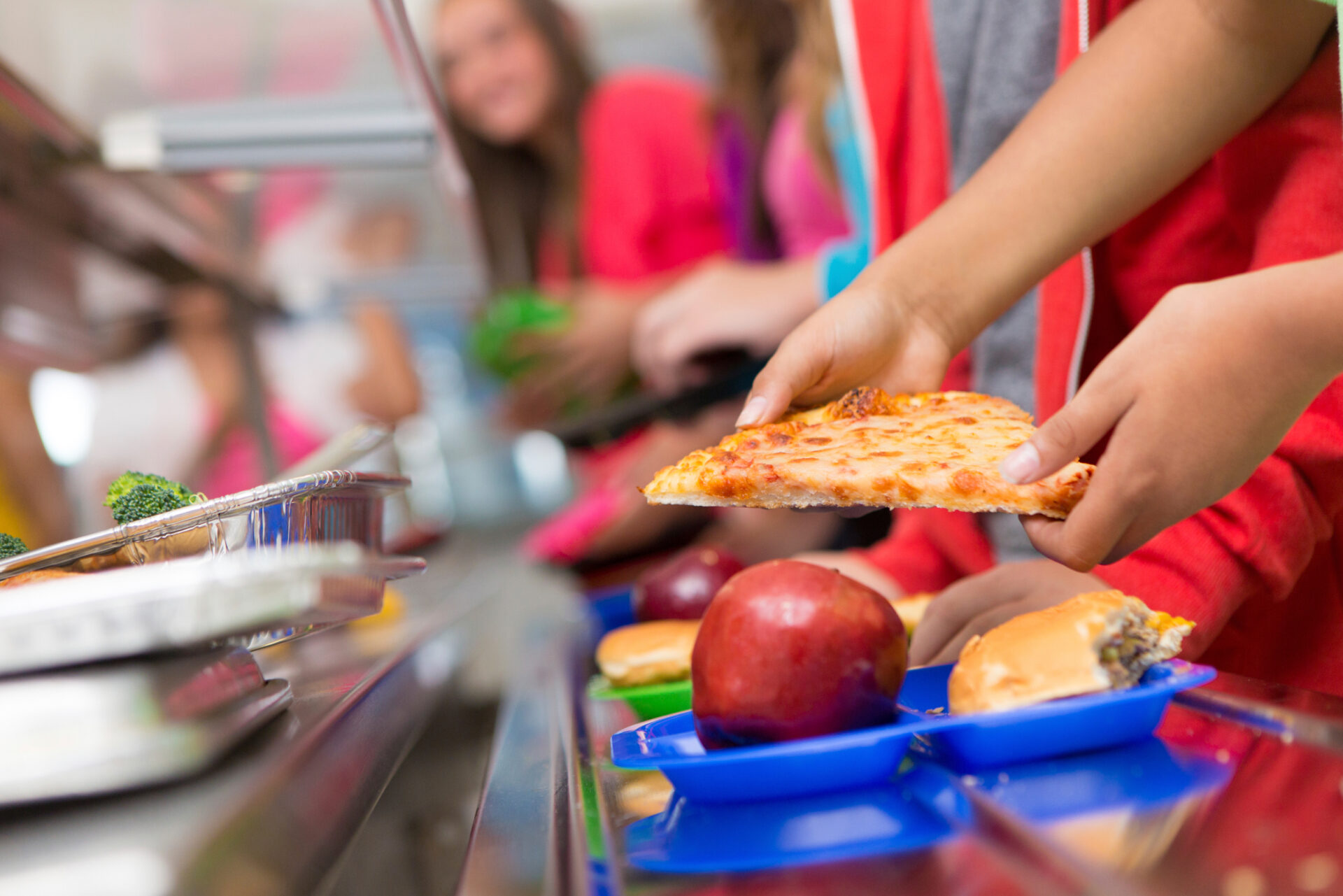Wharncliffe is a tiny community deep in the hills of Mingo County, in a rural corner of southern West Virginia. The road there is narrow with the signature hairpin curves of this region.
A Jeep SUV stocked with enough food to feed 50 kids makes the hour-long round trip five days a week from the nearby community center, over the mountain, to the local fire hall here.
One recent morning kids are laughing and doing crafts on pink plastic tablecloths before lunch. Janet Gibson, one of the volunteers, grew up right across the road.
“I’ve watched these kids grow up. Just want to make sure they’ve got something to eat. We’ve got a lot of parents doing foster care here, and a lot of kids don’t know what it is to get a hot meal,” she said.
These kids are getting lunch at the Wharncliffe Volunteer Fire Departmentthrough the West Virginia Department of Education’s summer food program, funded by the U.S. Department of Agriculture. One in five children in West Virginia experiences food insecurity, and the state has earned high marks for feeding kids during the school year. But only a fraction use the summer food program, a historically underused system nationwide.
Experts say transportation is one of the largest barriers to summer meal participation in urban and rural areas, and about three years ago, West Virginia was the focus of extra scrutiny. Samantha Snuffer-Reeves from the state’s Office of Child Nutrition said the state “[was] kind of a target area” for the USDA because of its especially low participation compared with other states.
“But once they came here,” she said, “they really understood that you don’t go from county to county in 20 minutes.”
The Office of Child Nutrition oversees about 450 summer feeding sites across West Virginia: Summer schools, community centers, vacation Bible schools and at programs like Energy Express. The state served 600,000 meals and gave out nearly $1.8 million in federal funds as reimbursements to those sponsors last year.
West Virginia topped all other states for school breakfast participation among low-income children, according to the Food Research and Action Center, but the Washington, D.C., nonprofit ranked its summer food program 44th in the nation.
Crystal FitzSimons, FRAC’s Director of School and Out-of-School Time Programs, said the state feeds about 10,000 children through the summer nutrition program, far less than the 130,000 kids who eat school lunch during the school year.
“West Virginia is very committed to making sure that their kids do not go hungry,” she said. “Unfortunately, [it’s] a rural state, and it can be hard to run the summer nutrition programs in rural areas.”
Cheryl Mitchem knows the struggle well. She’s the executive director of the Larry Joe Harless Community Center in Gilbert, which runs the feeding site in Wharncliffe. Last year, she rounded up a team of volunteer drivers to make the trips, sometimes taking her own car to deliver food.
While riding to one of her remote feeding sites, Mitchem reflected on the challenge of getting around in one of the state’s most isolated places.
“We’re gonna travel 45 minutes to take food to children that attend Gilbert Elementary, which is one mile from our center,” she said. “So, I think that tells you alone, not only distance, but commute time is so heavy a burden for parents.”
The Harless Center got an $18,000 grant in May from the Washington D.C. nonprofit No Kid Hungry for the Jeep that it dedicated to the summer food program. She also added another, even more rural site, where they’re feeding more than 40 kids. Volunteers still help deliver, but Mitchem has been able to reassign some to other needs. Residents at Crossroads Recovery Center, a substance abuse recovery home for women, deliver food to one site twice a week.
There are fewer summer food sponsors in Mingo, Wyoming and McDowell counties, all in the southern coalfields, than in other parts of West Virginia. The child nutrition office isn’t really sure why, but it recently honored Mitchem for her work to reach some of Mingo’s most vulnerable children.
“They go into the hollers of West Virginia, they deliver the food to these kids. Those are the type of programs we see being effective,” Snuffer-Reeves said.
There’s at least one spot outside the southern coalfields where a summer food sponsor found a creative way to reach kids. Lewis County officials rehabbed an old yellow school bus three years ago, creating a lunch-counter style interior on one side with booths from old school bus seats on the other. Laminate flooring gives it a mobile café feel.
On a hot recent weekday at the Lewis County Park in Weston, kids lined up at back of the bus for pigs-in-a-blanket, cheese and milk, and staff handed out free books.
“When you pull in, the kids are waiting for you, and that’s a good thing. They know you’re coming,” said Julie Williams, a secretary for the school system’s food service director.
A pilot program from the USDA gives public assistance cards to kids in six states and two Native American reservations during the summer. West Virginia isn’t one them, but FRAC says such programs have helped to reduce food insecurity.
Back in Mingo County, the Harless Center team plans to expand its reach even further next year.
